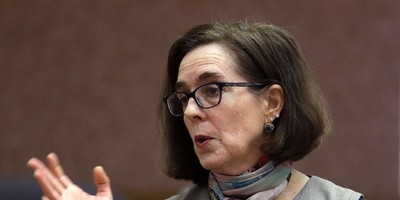If you live in a middle-class household, you generally expect your needs to be met through the marketplace. You buy or rent housing in the real estate market. When you aren't driving your own car, you catch a taxicab or maybe even hire a limo. You or your employer buy health insurance, and you choose your doctor in the medical marketplace.
For most poor families, the experience is very different. Regulations designed to protect entrenched special interests have succeeded in raising the costs of basic services so much that low-income families have been priced out of the market for many essential services. Middle-class and poor communities differ not just by income. For the middle class, basic needs are met by markets and they benefit from the customer-pleasing innovations that competition produces. All too often, the poor must turn to public programs with all of the customer-pleasing attributes of the Department of Motor Vehicles.
Take housing, for example. The cheapest form of housing is small, prefabricated homes for zero-lot developments. However, zoning regulations in most cities outlaw them — an act that effectively doubles the price of the cheapest housing. There are also other expensive restrictions on new housing, such as forcing builders to build on bigger lots and mandating specific types of materials and construction methods. Regulations vary widely across the United States. In Houston, a less restrictive city, regulatory costs add about $13,200 to the price of an average home. In San Diego, a multitude of regulations add $240,000. These cost-increasing regulations have essentially priced many low-income residents out of the market for a private home, forcing them to turn to public housing instead.
Recommended
Then there is transportation. Did you know that people in the bottom fifth of income distribution take more taxicab rides than middle-income families? The reason: a lot of poor people don’t own automobiles. Taxi fares are far higher than they need to be, however, because local governments tightly control entry into the taxi market. There is no reason in principle why someone with a van couldn’t pick up workers in a low-income neighborhood and transport them to a jobsite, charging each passenger a few bucks. The problem: Most cities make this activity against the law.
When low-income families are priced out of the market for private transportation, they must turn to public transportation. Since only a few cities have subways, that means turning to buses. Yet, even a simple trip to work or a supermarket can be a logistical nightmare if you have to follow city bus schedules.
And consider health care. Sad to say, but the paramedics who treat our soldiers on the battlefields in Iraq and Afghanistan are not allowed to provide the same services back home for people who can’t afford, and perhaps don’t need, the attention of a physician. Although the restrictions differ from state to state, laws everywhere “protect” patients from care delivered by anyone other than a physician. This is despite studies showing that non-physician clinicians can competently provide from 60 percent to 90 percent of all primary care.
In some parts of the country, walk-in clinics in shopping malls allow nurses to give flu shots, take temperatures, prescribe antibiotics and deliver other timely, inexpensive care. But even these innovative services are often saddled with burdensome regulations. For example, in Massachusetts, regulations for clinics have such cost-increasing requirements as a separate entrance for patients, minimum size requirements for exam rooms, and a separate reception desk. When low-income families find they cannot afford private care, what’s the alternative? Community health centers and the emergency rooms of safety net hospitals. Yet these care sites often involve crowding and waiting, which limits access to care.
Child care is another basic service needed by many low-income families. In fact, low-income families spend about a third of their income on child care, as much as a typical middle-income family might spend on a home. In recent years, state and local governments have been making child care ever more costly, however. All manner of regulations are emerging, including the licensing of day care workers. Did you know that in most places, it’s illegal for a neighbor down the street to oversee children from the neighborhood for pay? Again, what’s the alternative? Low-income mothers must seriously consider abandoning the labor market altogether and rely solely on the welfare state.
Even a basic activity like keeping the neighborhood safe runs into regulatory barriers. In response to inadequate public police protection, an increasingly popular alternative is private police. In the United States, private security guards actually outnumber public police officers by a ratio of three to one; and they can perform most, if not all, of the necessary law enforcement tasks. Yet, government regulation has created substantial barriers for would-be security firms, including criminal background checks, examinations, training requirements, and insurance and bonding minimums.
A task force report produced by the National Center for Policy analysis calls for an end to these senseless policies, and advocates allowing our lowest-income citizens access to the benefits of the free market. I’ll write about it in a future column.

























Join the conversation as a VIP Member